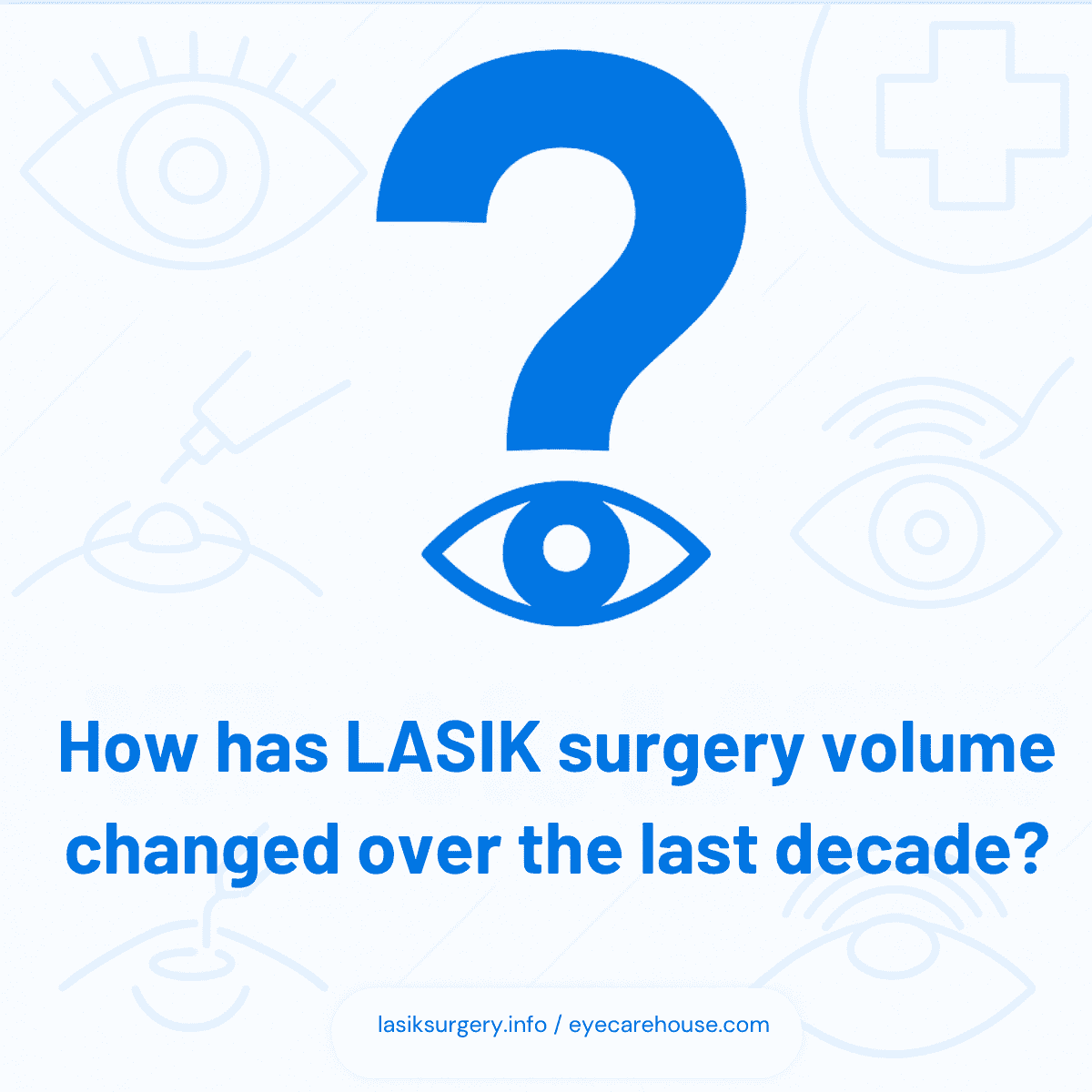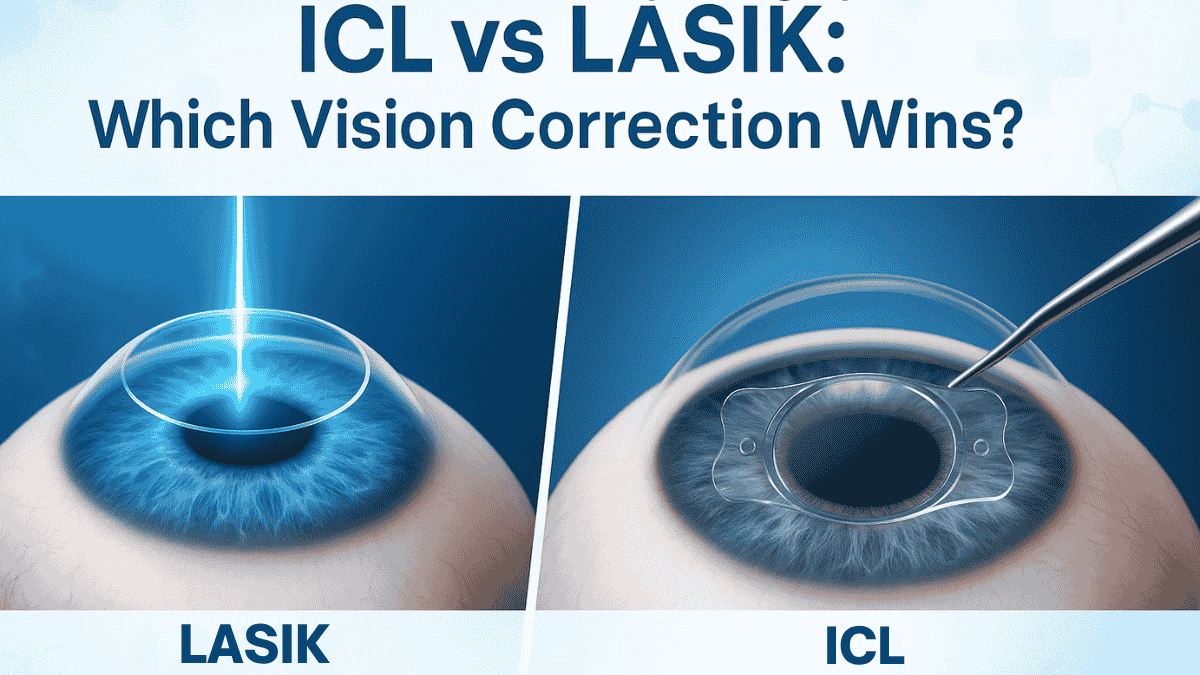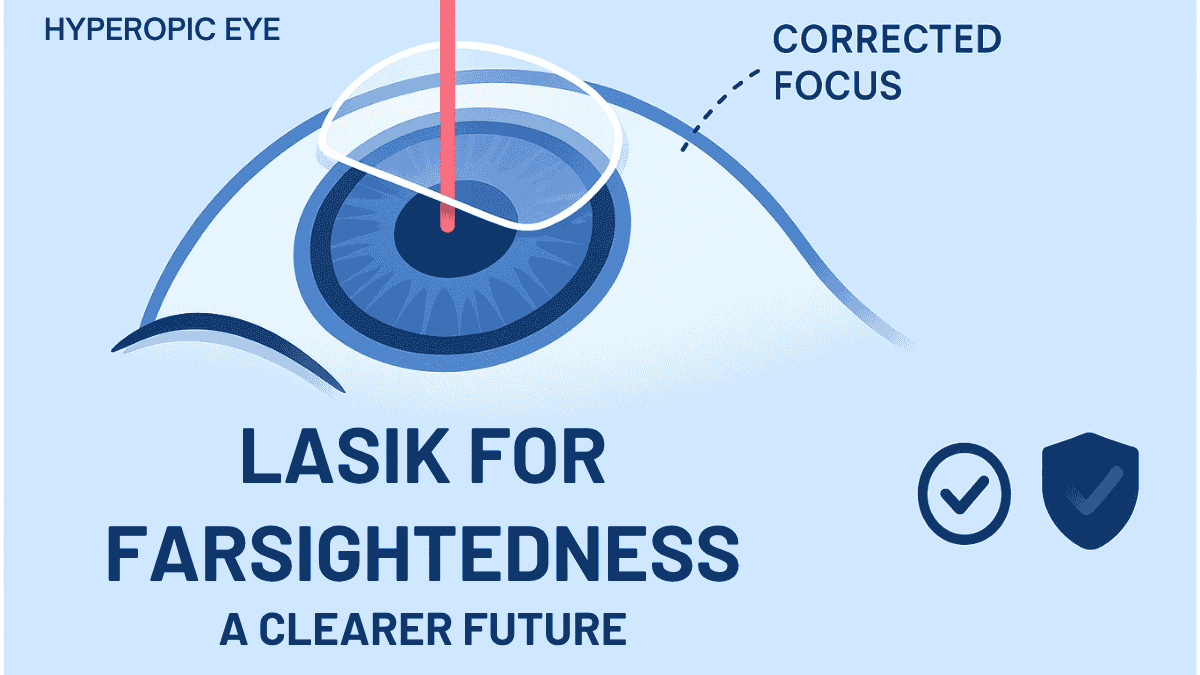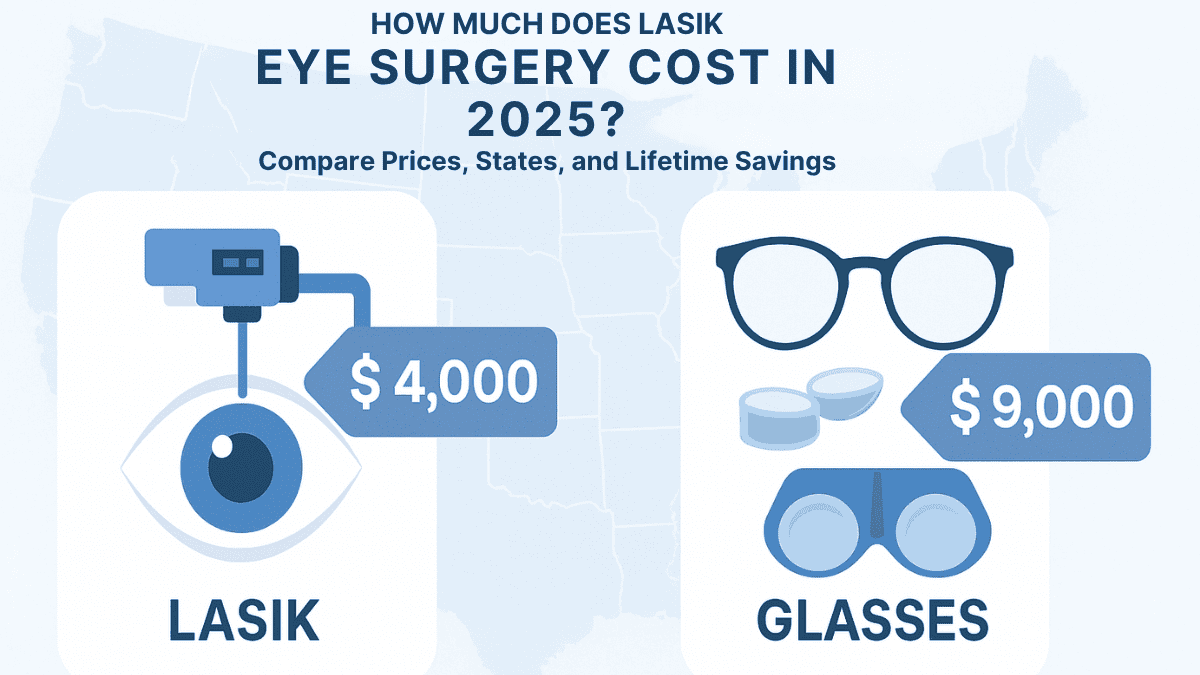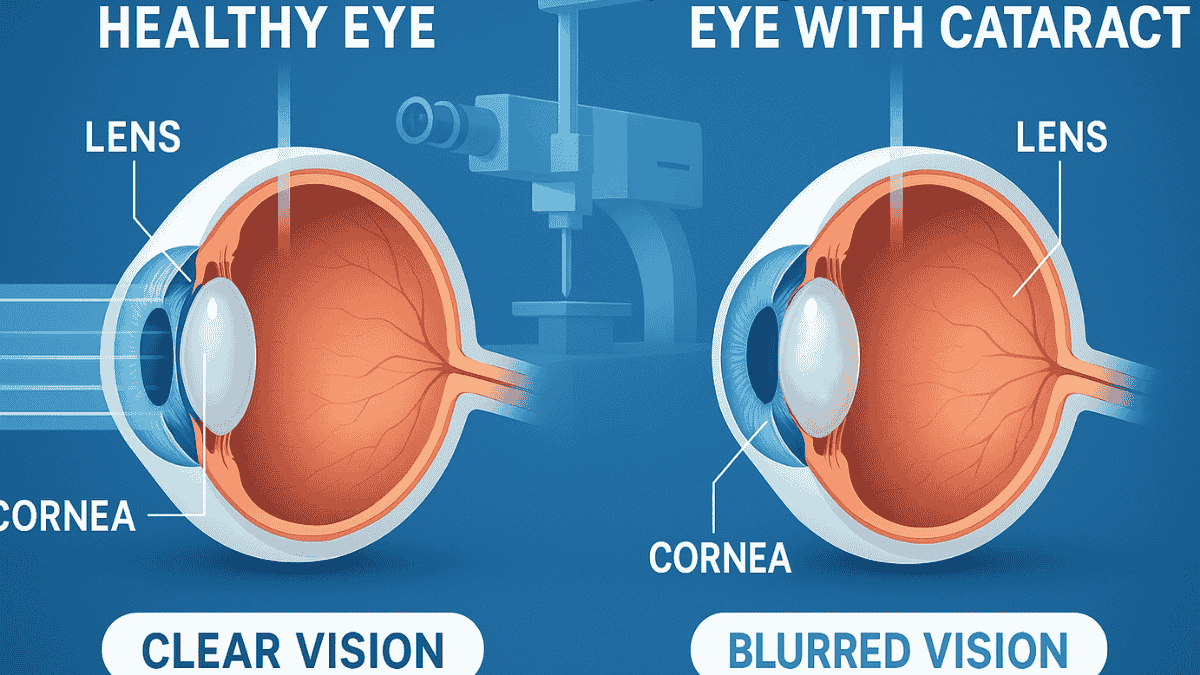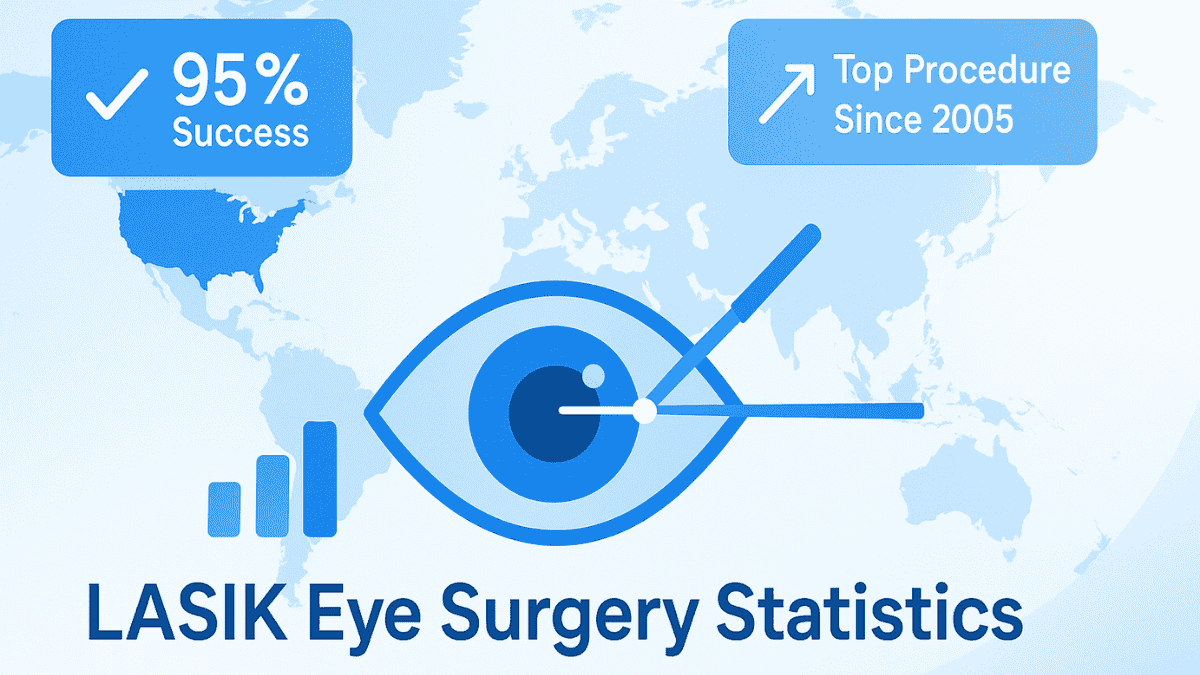
Thinking about LASIK eye surgery is a big step. You want clear vision, free from glasses or contacts. But you also need to feel confident about the choice. That’s why looking at current LASIK eye surgery statistics is so important. These numbers cut through the hype and provide a realistic view of what you can expect. This 2025 update gathers the latest studies on LASIK eye surgery statistics, helping you understand this popular vision correction method.
Table of Contents
How Many People Get LASIK?
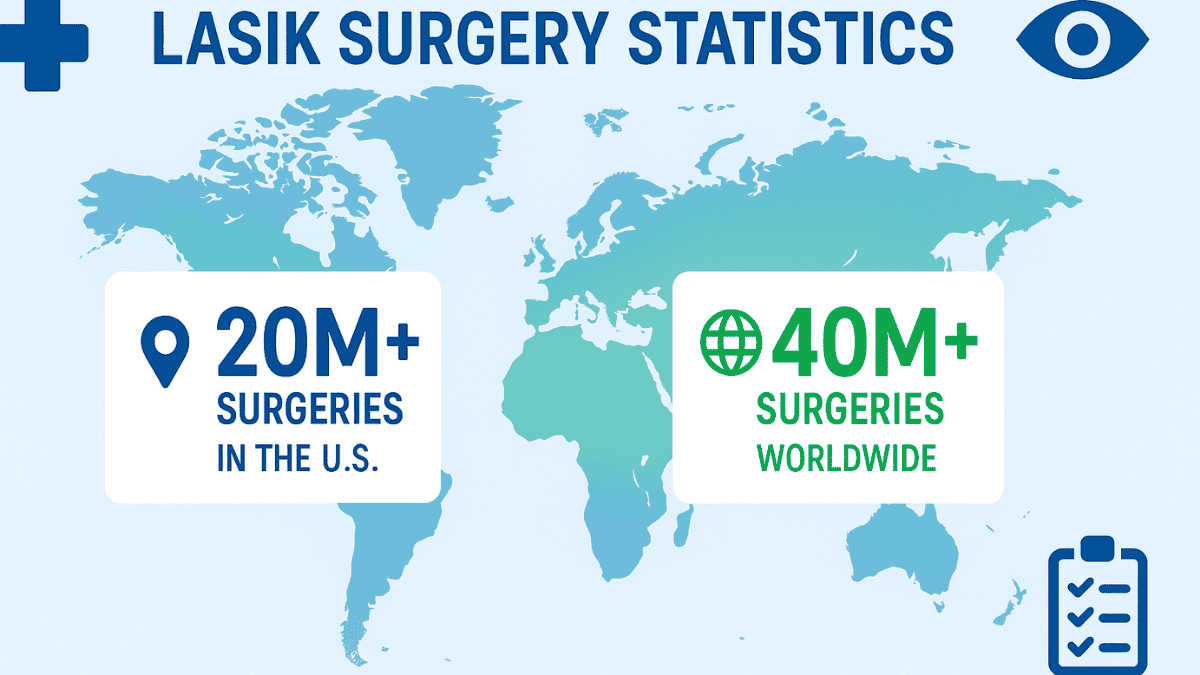
LASIK is a very popular eye surgery. Millions of people around the world have chosen it to improve their eyesight. In the United States alone, the numbers are quite significant, indicating widespread trust in this refractive surgery.
It’s estimated that over 20 million LASIK procedures have been performed in the U.S. since its approval by the FDA. Each year, hundreds of thousands more people opt for LASIK to correct their vision problems. For instance, before some shifts in recent years, figures often showed around 700,000 procedures annually in the U.S., showcasing it as a common elective procedure. These numbers can fluctuate based on economic factors, consumer confidence, and advancements in surgery technology.
Globally, the number is even larger, with estimates suggesting over 40 million procedures performed. The American Refractive Surgery Council consistently highlights LASIK’s popularity among various laser vision correction techniques. This demonstrates a long history of people trusting this method for achieving clear vision. The trend has generally been one of growth, although new procedures and refinements to existing ones continually shape the landscape of eye care.
Related Article
LASIK Eye Surgery GuideLASIK Success Rates: Seeing Clearly
When you consider LASIK, your main question is likely about the results and the LASIK success rate. How well will you see afterward? The LASIK surgery success rate is a key piece of information for anyone contemplating this procedure. Thankfully, the data here is very positive, with most patients reporting high satisfaction with their vision after LASIK.
Studies consistently show high success rates for this eye surgery. A large percentage of patients are achieving 20/20 vision or better, which is a common benchmark for success. Many others reach 20/40 vision or better, a level of visual acuity good enough to drive legally without correction in most places. According to comprehensive reviews of LASIK literature, over 95% of patients are satisfied with their outcome, a testament to the surgery success.
Many studies report that between 90% and 99% of LASIK patients achieve at least 20/40 uncorrected distance vision. The LASIK success rate for achieving 20/20 vision is also impressive, with a high majority reaching this standard. Reports from respected organizations like the American Academy of Ophthalmology support these high satisfaction levels and robust success rates, showing how often patients achieve clear vision.
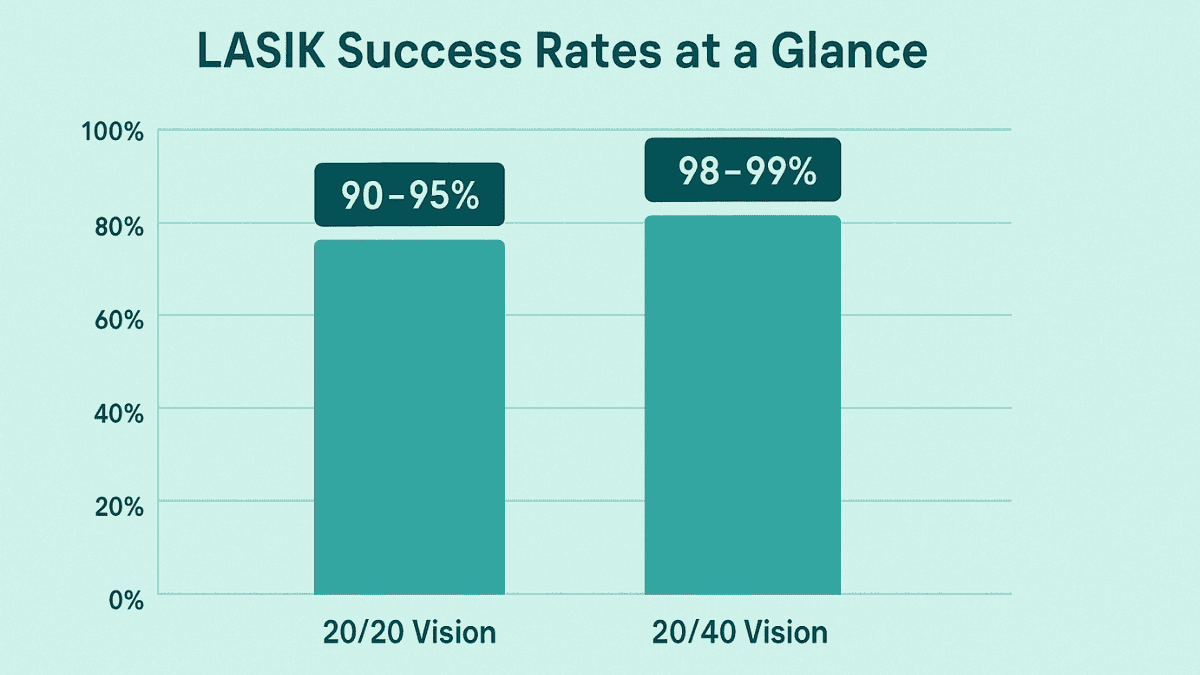
How is success rate measured? It’s typically assessed through objective visual acuity tests and patient-reported outcomes focusing on vision quality and satisfaction. The stability of LASIK results is another common query. For most people, LASIK results are permanent, as the procedure reshapes the cornea to correct existing vision problems. This reshaping itself doesn’t wear off.
However, eyes can still change naturally over time due to aging. This can lead to conditions like presbyopia, the age-related need for reading glasses, which LASIK does not prevent. It’s important to understand that LASIK corrects your current refractive error; it does not stop the normal aging process of the eye or other potential eye health issues.
Compared to glasses or contact lenses, LASIK offers a long-term solution. You avoid the daily care of contact lenses or the limitations of glasses. This convenience is a significant reason many people choose LASIK, contributing to the high LASIK patient satisfaction numbers. Data from patient-reported outcomes often show satisfaction rates exceeding 96%, underscoring the positive impact of laser eye surgery on lifestyles.
Related Article
Is Laser Eye Surgery Worth It? Exploring the BenefitsDiving Into LASIK Eye Surgery Statistics: Complications and Risks
No surgery is entirely without risk, and it is important to look at the LASIK complication rate. Understanding potential issues helps you make a balanced decision about laser eye surgery. The good news is that serious complications from LASIK are rare, and most common side effects are temporary and manageable, contributing to the perception that LASIK is safe for most candidates.
Related Article
LASIK Eye Surgery Risks: What You Need to KnowCommon Temporary Side Effects
Some patients experience dry eyes after LASIK. This is a very common side effect, particularly in the initial weeks post-surgery. Studies, like those cited by the U.S. Food and Drug Administration (FDA), indicate that dry eye symptoms can affect a significant number of patients temporarily. For most, this condition improves within a few months, and symptoms can be managed effectively with artificial tears and other therapies.
The dry eye occurrence after LASIK often decreases significantly after the first six to twelve months. Your eye surgeon will discuss how to manage this. It’s a key part of post-operative eye care.
Related Article
Dealing with Dry Eye After LASIK: Causes and RemediesNight vision issues such as glare, halos, or starbursts around lights are also possible after LASIK eye surgery. This is often more noticeable in the early weeks or months after surgery. Night glare after LASIK has become less common with newer laser technologies, such as advanced laser systems. Modern lasers create a more precise corneal shape, minimizing these visual disturbances for many patients. Many patients find these symptoms fade over time as their eyes heal.
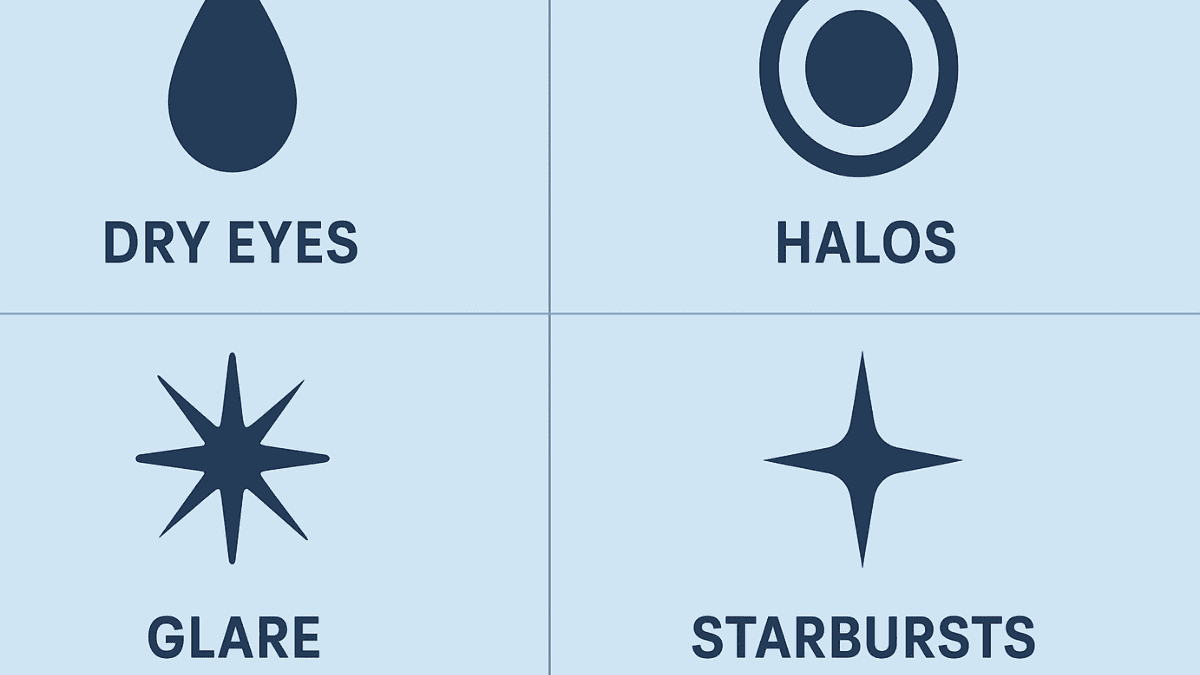
Need for Enhancements
Sometimes, an additional LASIK procedure, called an enhancement or retreatment, is needed. This is not strictly a complication but rather a way to fine-tune the vision correction. LASIK enhancement statistics show that a small percentage of patients may need this, particularly if they had a very high prescription before the initial surgery. Rates for enhancements generally fall between 5% to 10% over a patient’s lifetime, although some clinics might report lower numbers.
These lower numbers can depend on the advanced surgery technology they use and careful patient selection. The goal is always to achieve the best possible vision improvement. The failure rate, if defined as not achieving the desired outcome without further intervention, is low but enhancements address this.
More Serious But Rare Complications
Serious complications that could threaten vision are very rare with LASIK surgery. Issues like infections or significant inflammation occur in a tiny fraction of cases. Following your eye surgeon’s post-operative care instructions carefully is vital for minimizing these risks. The overall risk of sight-threatening complications is estimated to be less than 1%, making it a very safe elective procedure when performed on suitable candidates.
Another point of discussion can be corneal ectasia. This is a condition where the cornea becomes weak and bulges outward, potentially distorting vision. This is very rare, especially with careful pre-operative screening. Modern screening checks corneal thickness and shape using advanced diagnostic technology to identify at-risk patients. Reputable surgeons will not perform LASIK if you are at higher risk for such issues, prioritizing your eye health above all.
LASIK vs Other Procedures: A Data Comparison
LASIK is not the only laser vision correction option available. PRK (Photorefractive Keratectomy) and SMILE (Small Incision Lenticule Extraction) are also common refractive surgery procedures. How do their outcomes compare based on hard data and LASIK statistics versus other surgery statistics?
PRK was actually the first type of laser eye surgery. It is still used effectively, especially for patients with thinner corneas or certain lifestyles that might make a corneal flap (created in LASIK) less desirable. LASIK generally offers a faster visual recovery than PRK. PRK involves removing the cornea’s outer layer, which needs time to regrow, meaning discomfort and blurry vision can last longer.
However, long-term visual outcomes for both PRK and LASIK are very similar regarding clarity. A study published in the Journal of Cataract & Refractive Surgery often features comparisons showing similar efficacy. Both have high success rates in achieving 20/20 or 20/40 vision. The choice often comes down to individual corneal anatomy and healing preferences.
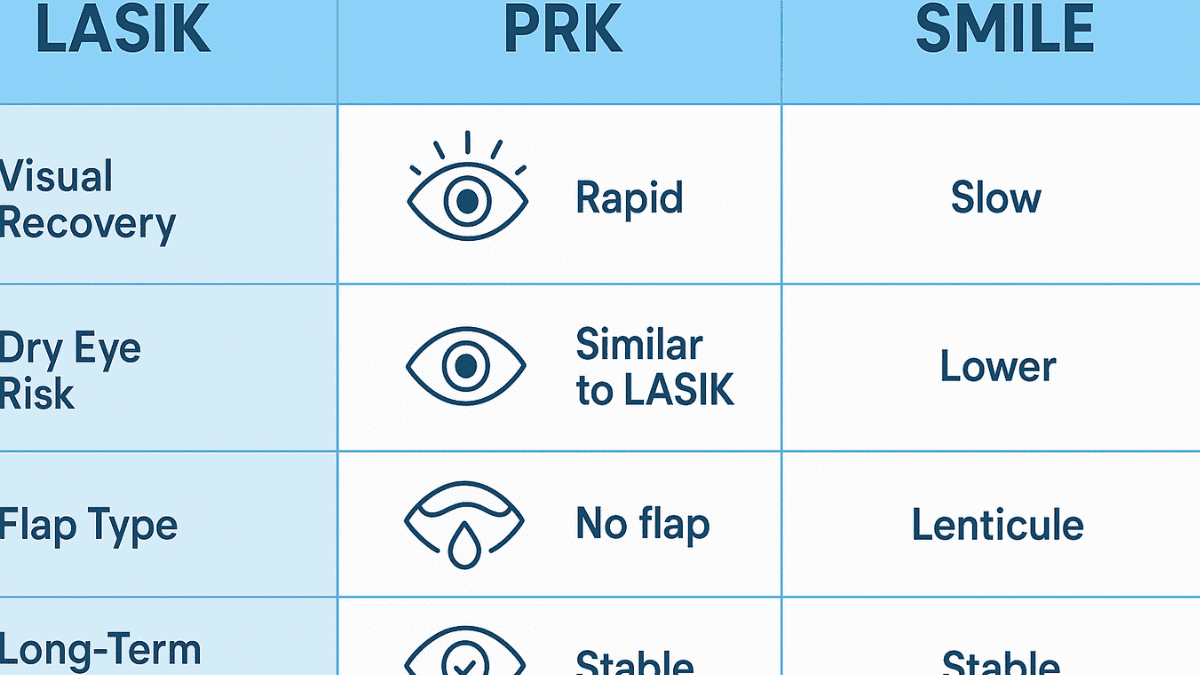
SMILE is a newer procedure in the field of laser vision. It involves creating a small lens-shaped piece of tissue (lenticule) within the cornea. This lenticule is then removed through a small incision, making it less invasive to the corneal surface than LASIK. Some studies suggest SMILE might lead to less severe dry eye symptoms initially compared to LASIK. However, LASIK has a longer track record and can treat a wider range of prescriptions, including higher levels of astigmatism, and offers options like topography-guided LASIK results for very personalized treatments.
Research continues to compare these procedures directly on a larger scale. Other options like refractive lens exchange (RLE) or the EVO ICL (Implantable Collamer Lens) also exist, often suited for different age groups or prescription types. RLE involves replacing the eye’s natural lens with an artificial intraocular lens, similar to cataract surgery, and can be a good option for older patients or those with very high prescriptions.
Here’s a simple table highlighting some key differences based on available data from laser eye surgery statistics:
| Feature | LASIK | PRK | SMILE |
|---|---|---|---|
| Visual Recovery Speed | Fast (1-2 days) | Slower (1-4 weeks) | Moderate (Few days to a week) |
| Dry Eye Incidence (Initial) | More common | Less common initially than LASIK but can occur | Potentially less common |
| Corneal Flap | Yes | No (surface ablation) | No flap, small incision |
| Long-term Visual Acuity (e.g., 20/20) | Very high | Very high | High, comparable to LASIK for certain prescriptions |
| Suitability for Thin Corneas | Less suitable | More suitable | Can be suitable |
| Historical Data | Extensive | Extensive | Growing, newer procedure |
Choosing between LASIK, PRK, SMILE, EVO ICL, or even refractive lens exchange depends on your individual eye health, prescription, and lifestyle needs. A thorough eye exam and a detailed discussion with your ophthalmologist or eye surgeon will determine the best option. This is often covered during an initial lasik consultation, which may be a free lasik consultation.
Related Article
Safe Alternatives to LASIK: PRK, LASEK, and Ortho‑K ExplainedPerception and Demographics: Who Gets LASIK?
Public interest in LASIK has been strong for many years, reflecting a desire for freedom from glasses and contact lenses. Looking at tools like Google Trends shows a consistent level of search interest over time for terms like “lasik eye surgery” and “lasik cost“. This indicates people are actively researching the procedure, looking for information like these LASIK eye surgery statistics to see if LASIK is safe for them.
Who is the typical LASIK patient? While it varies, data suggests a broad range. Generally, patients are between 18 and 55 years old. Younger patients are often correcting nearsightedness, farsightedness, or astigmatism, common vision problems people opt to fix. Older patients in this range might also be looking for freedom from glasses before presbyopia becomes a primary issue.
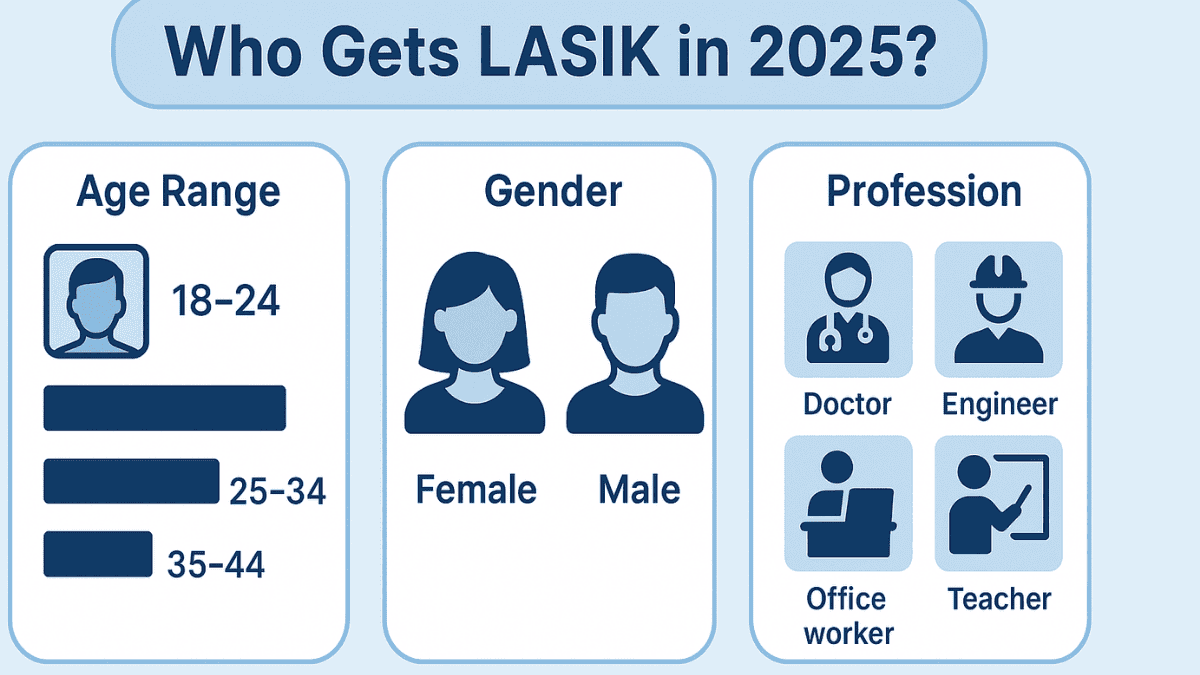
There isn’t a significant gender skew; both men and women choose LASIK in large numbers. Overall satisfaction by group also shows interesting trends, with most demographic groups reporting very high satisfaction. Some studies show that satisfaction can be tied to pre-surgery expectations, which is why understanding LASIK statistics is so important. Patients who understand the potential outcomes, benefits, and side effects tend to be happier with their results because they know what to expect. Good eye care professionals ensure patients are well-informed.
Job types sometimes play a role in the decision to pursue laser eye surgery. People in professions where glasses or contacts are inconvenient might be more drawn to LASIK. This includes athletes, first responders, or military personnel; for example, many pilots treated with LASIK appreciate the enhanced visual freedom. Their need for excellent uncorrected distance vision drives their interest. However, the appeal of LASIK is wide, as many people simply want the lifestyle change and clear vision it offers because they believe they deserve clear vision.
Related Article
Laser Eye Surgery Age Limits: What Parents Should KnowAdvancements in LASIK Technology
The field of laser vision correction is constantly benefiting from modern technology. Advanced laser vision correction technology plays a crucial role in the high success rates and minimal complications associated with LASIK today. This includes sophisticated diagnostic tools and precise laser systems. The specific surgery technology used can impact the quality of vision improvement.
Innovations like femtosecond lasers for flap creation have made the procedure more predictable and safer than older methods using a microkeratome. Wavefront-guided and topography-guided LASIK represent advanced laser vision correction techniques. These methods map the eye’s unique imperfections to create a personalized treatment plan, potentially leading to sharper vision and fewer night vision issues. This advanced laser vision capability is a significant step forward in correction technology.
The ongoing development of laser vision correction technology means that procedures performed today are more refined than ever. This commitment to improvement by the medical community and industry helps ensure that more patients can achieve their desired visual outcomes. When considering LASIK, ask about the specific advanced laser vision correction technology your surgeon uses.
Understanding LASIK Cost and Financing
The LASIK cost is an important factor for many individuals considering the procedure. Prices can vary based on the technology used, the surgeon’s experience, and geographic location, such as practices in Los Angeles versus other areas. It’s essential to get a clear breakdown of what the quoted price includes, such as pre-operative consultations, the procedure itself, and post-operative care, including any potential enhancements.
While LASIK is an investment, many find the long-term savings on glasses, contact lenses, and solutions make it worthwhile. To make the procedure more accessible, many clinics offer LASIK financing options. These plans can help spread the cost over time, making it easier to budget for. Investigating these options during your LASIK consultation can provide a clearer financial picture.
Real Studies & Sources: Trustworthy Information
When looking at LASIK eye surgery statistics, it is vital to use trustworthy sources. You want information based on real clinical studies and data from eye surgery statistics. Marketing claims can be positive, but data from research provides a clearer and more objective view. Reputable sources are key to understanding the real numbers, including the LASIK success and potential LASIK complication rates.
The FDA (U.S. Food and Drug Administration) is a primary source for information. They oversee the approval of medical devices, including LASIK lasers and other surgery technology. The FDA website has patient information about LASIK, detailing risks, benefits, and what patients report. They also reference studies like the Patient-Reported Outcomes with LASIK (PROWL) studies. These FDA studies on LASIK give valuable insight into patient experiences, looking at visual symptoms and quality of life after the eye surgery.
Peer-reviewed medical journals are another excellent source for reliable LASIK statistics. Publications like the Journal of Cataract & Refractive Surgery, Ophthalmology, and the American Journal of Ophthalmology regularly publish studies on LASIK and other forms of refractive surgery. These articles are reviewed by other experts in the field, ensuring the research methods and conclusions are sound. They often detail how success rate is measured and present unbiased findings.
Organizations like the American Academy of Ophthalmology (AAO) and the American Society of Cataract and Refractive Surgery (ASCRS), along with the Refractive Surgery Council, also provide reliable information. They summarize research and offer guidance for both patients and doctors. Relying on such sources demonstrates transparency and helps you get the real numbers you need for your decision. These sources can confirm that most patients experience significant vision improvement with minimal complications.
Remember, good eye surgeons will discuss these statistics with you, often during a free LASIK consultation or a more detailed LASIK consultation. They will share their own outcome data if available and answer your questions openly. This commitment to informed consent is a sign of a quality provider. Always ask where their information comes from and ensure you feel comfortable with their answers, as you deserve clear vision and a trustworthy medical partner.
Conclusion
The journey to clearer vision involves careful thought and research. Reviewing LASIK eye surgery statistics helps build a solid foundation for your decision. The data from 2025 and earlier years paints a consistent picture: LASIK generally has a strong safety profile and very high patient satisfaction rates, making it a leading choice for vision correction.
Most people achieve significantly better vision, with many patients achieving 20/20 or better. While temporary side effects like dry eye or night glare can happen, serious complications are rare, especially with modern technology and skilled surgeons. Modern laser vision correction technology continues to refine the procedure, often leading to even better outcomes and lower risks.
Knowing these figures helps you balance the benefits against the potential downsides. You deserve clear vision, and understanding these comprehensive LASIK eye surgery statistics should give you more confidence. As you explore your options for laser eye surgery, use this information to ask informed questions during your LASIK consultation.
Related Article
What to Expect During a LASIK ConsultationOver 700,000 LASIK procedures are performed each year in the United States.
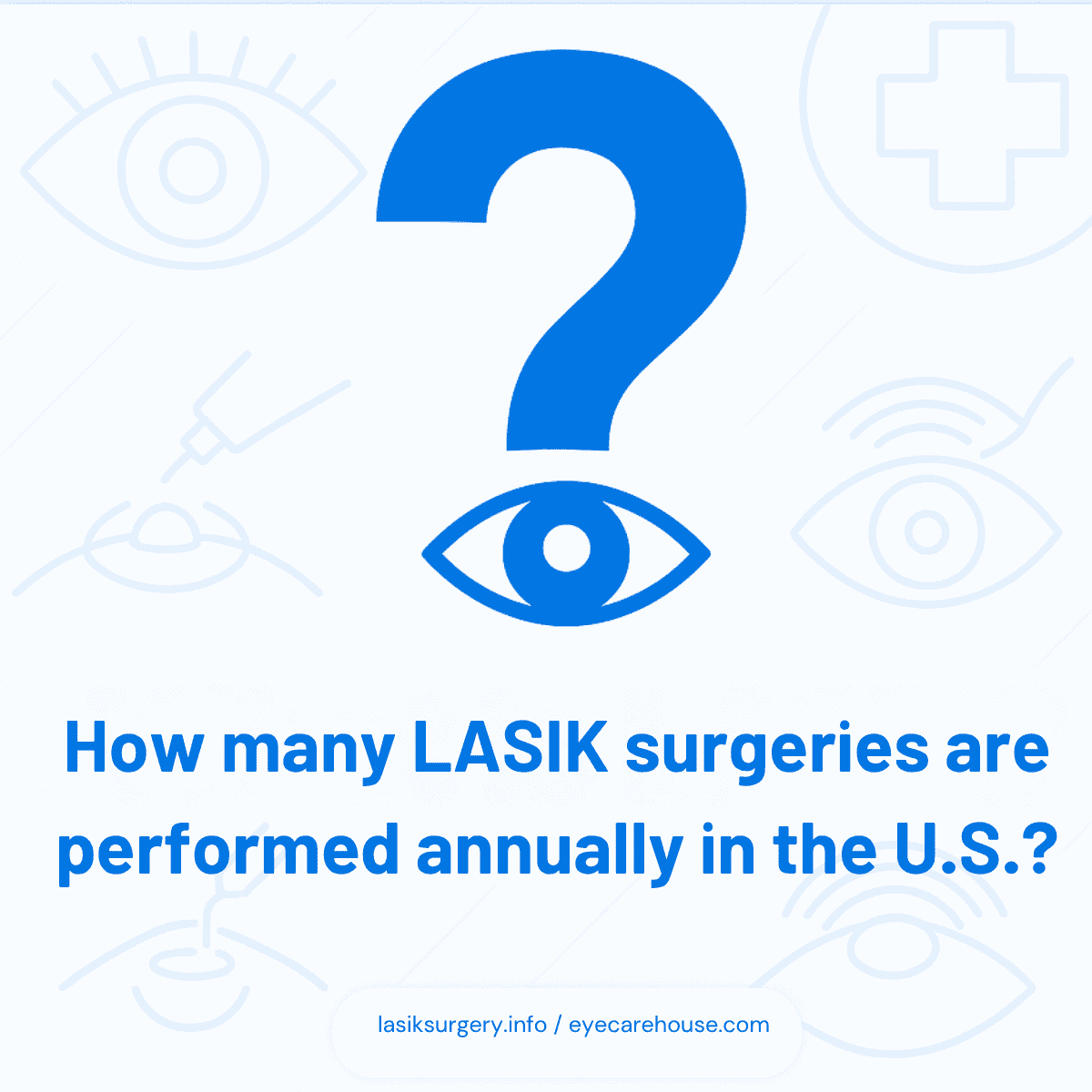
Over 40 million people worldwide have had LASIK eye surgery since it was introduced.
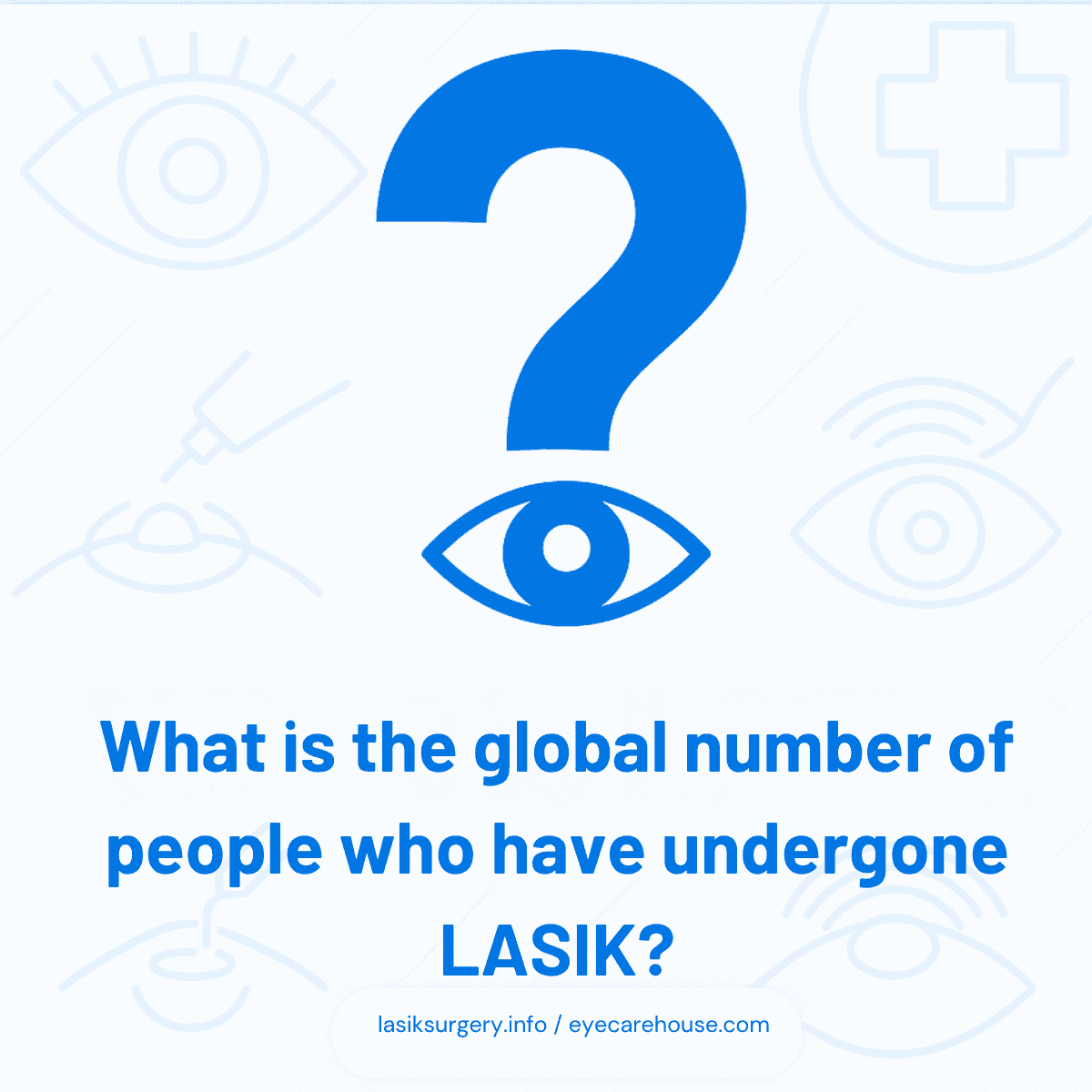
Approximately 90–95% of LASIK patients achieve 20/20 vision or better.
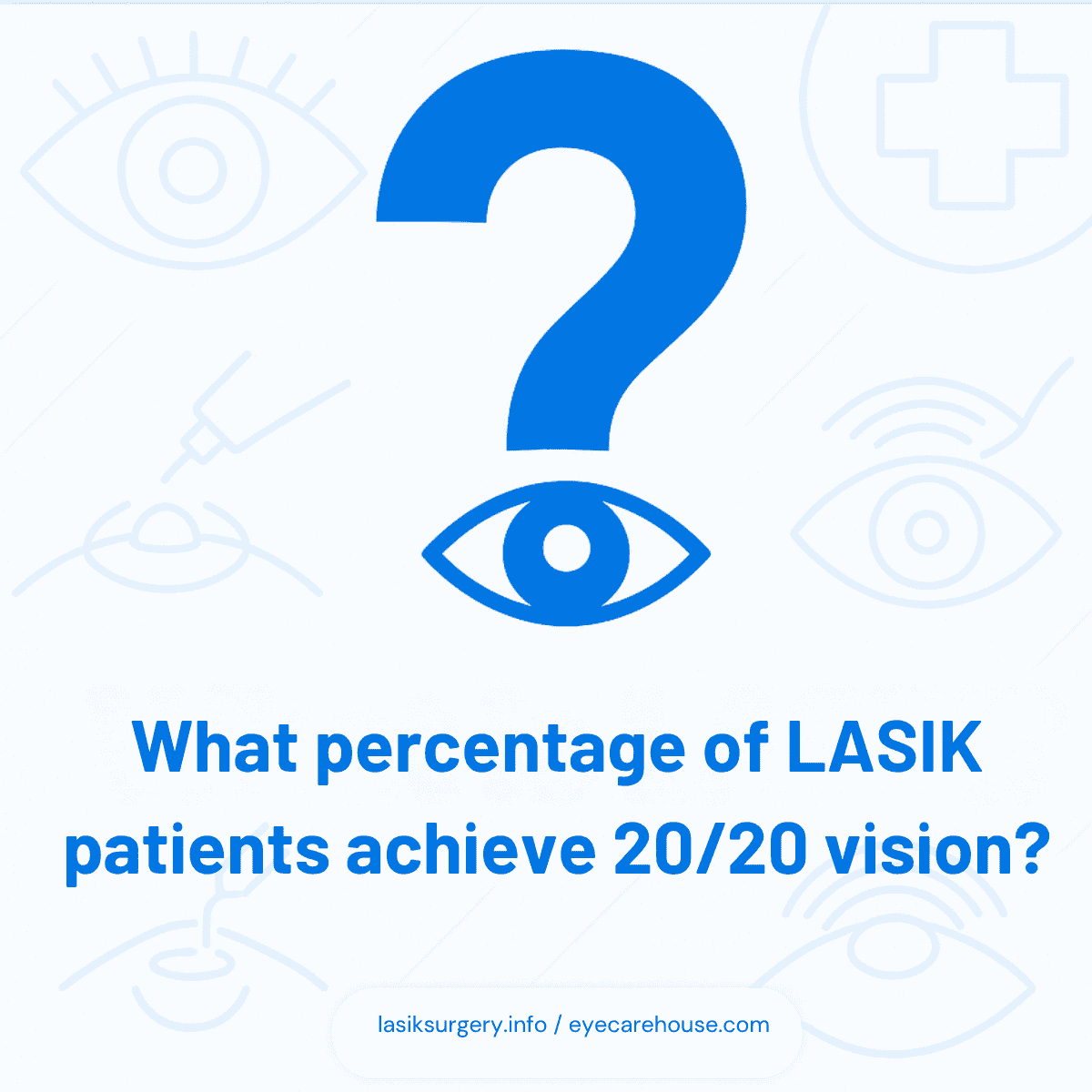
Between 98–99% of LASIK patients achieve at least 20/40 vision.
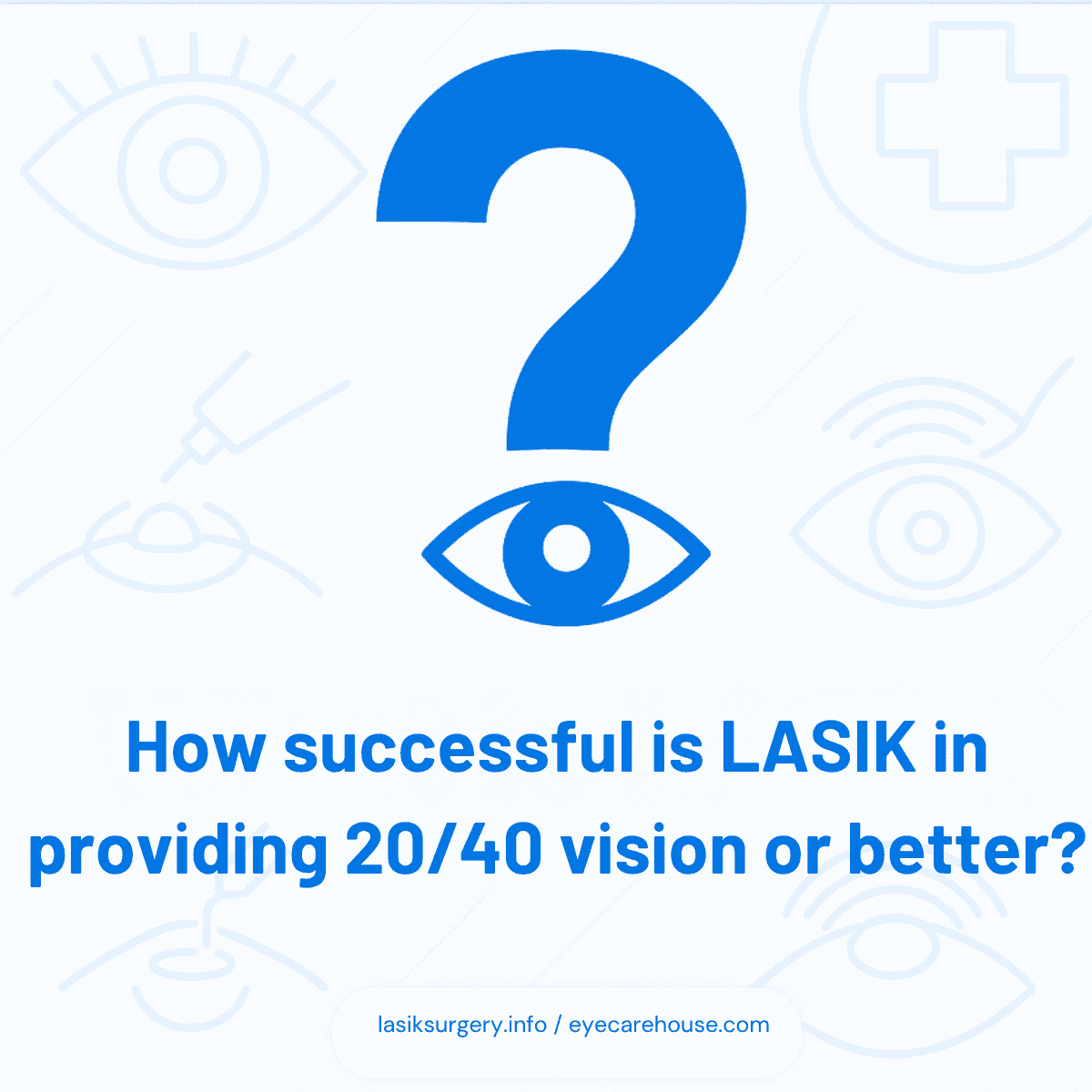
Most LASIK patients in the U.S. are between 25 and 45 years old.
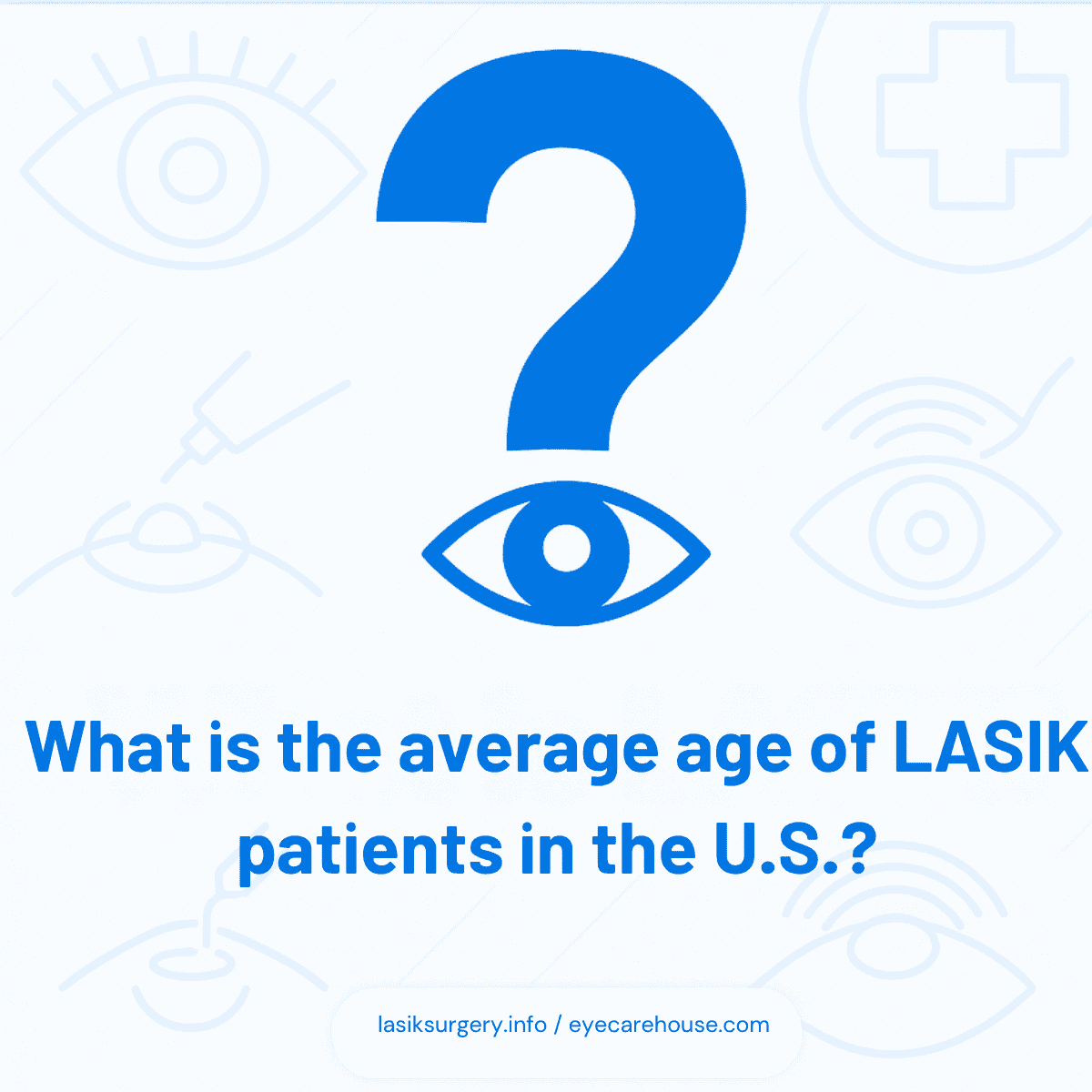
The average cost of LASIK surgery in the U.S. is around $4,500 for both eyes.
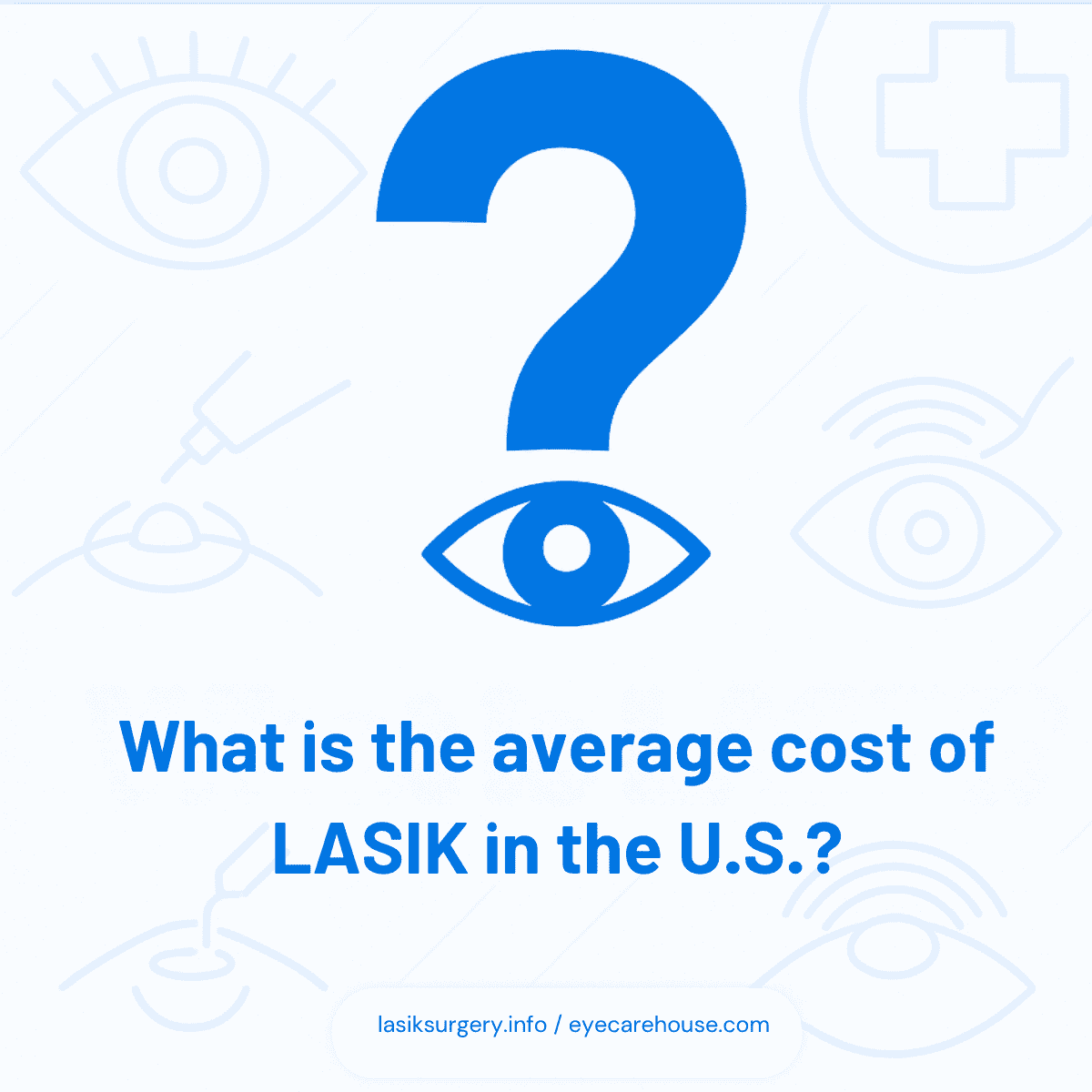
Over 95% of LASIK patients report high levels of satisfaction after the procedure.
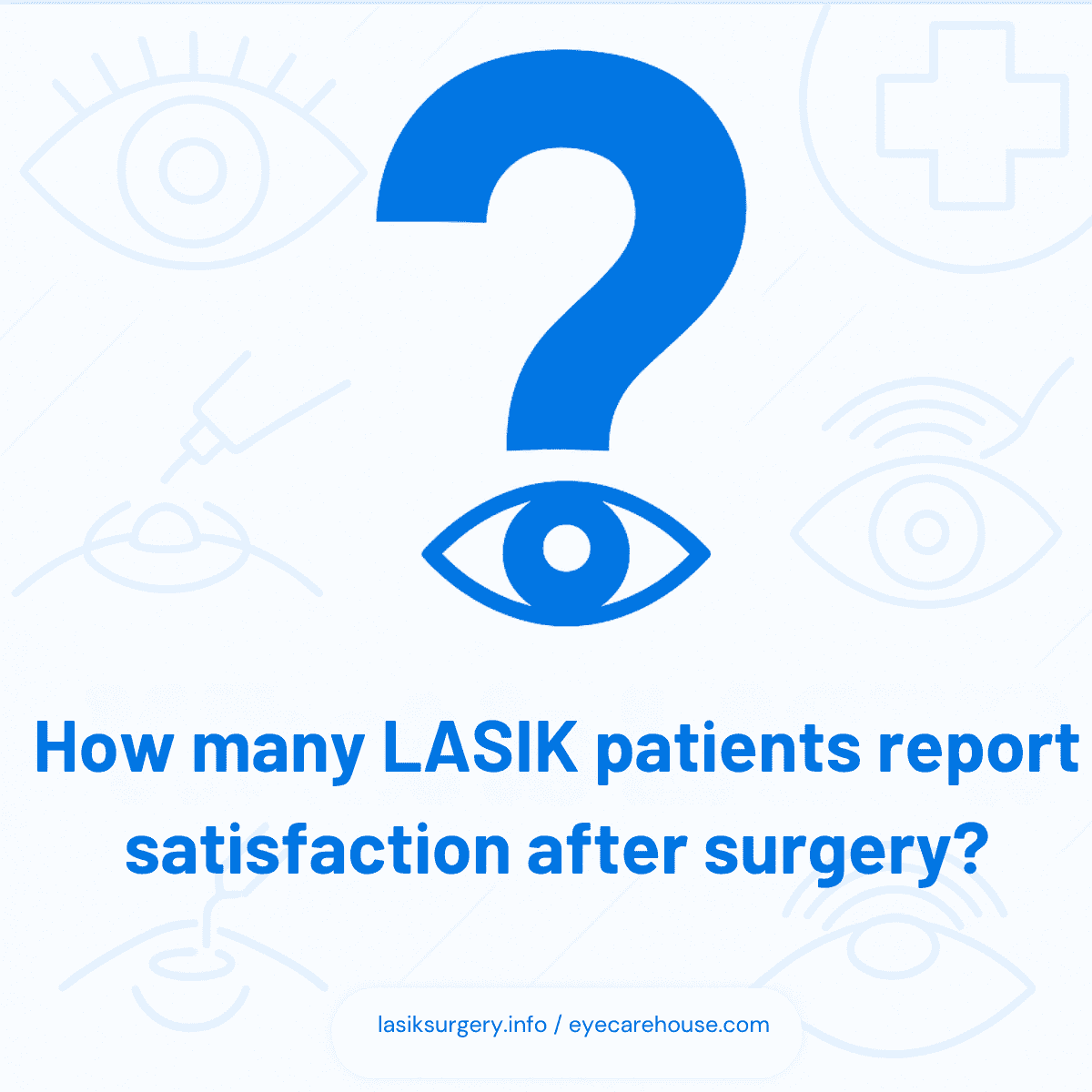
Modern LASIK surgery has a complication rate of less than 1%.
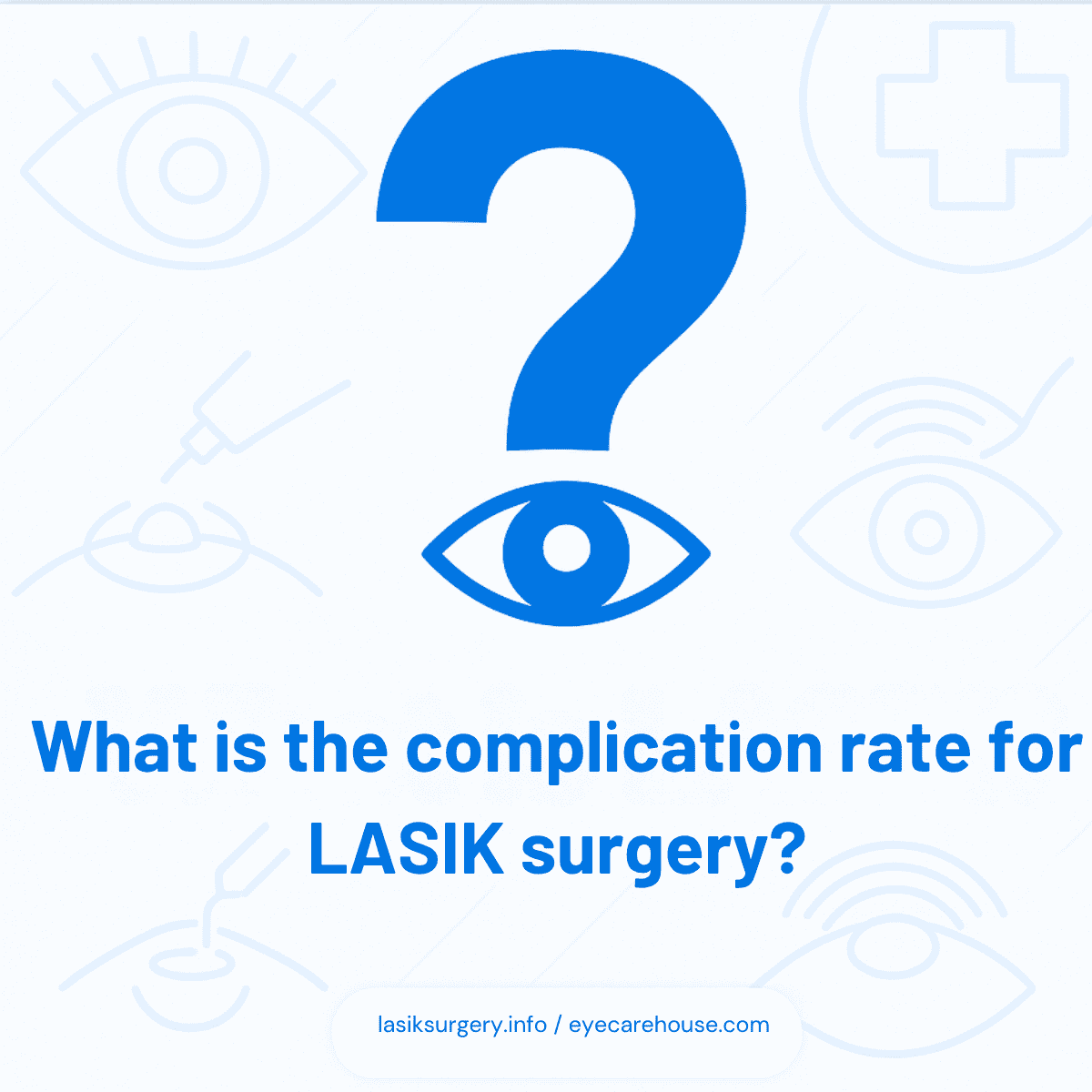
There are approximately 1,200 LASIK clinics across the U.S.
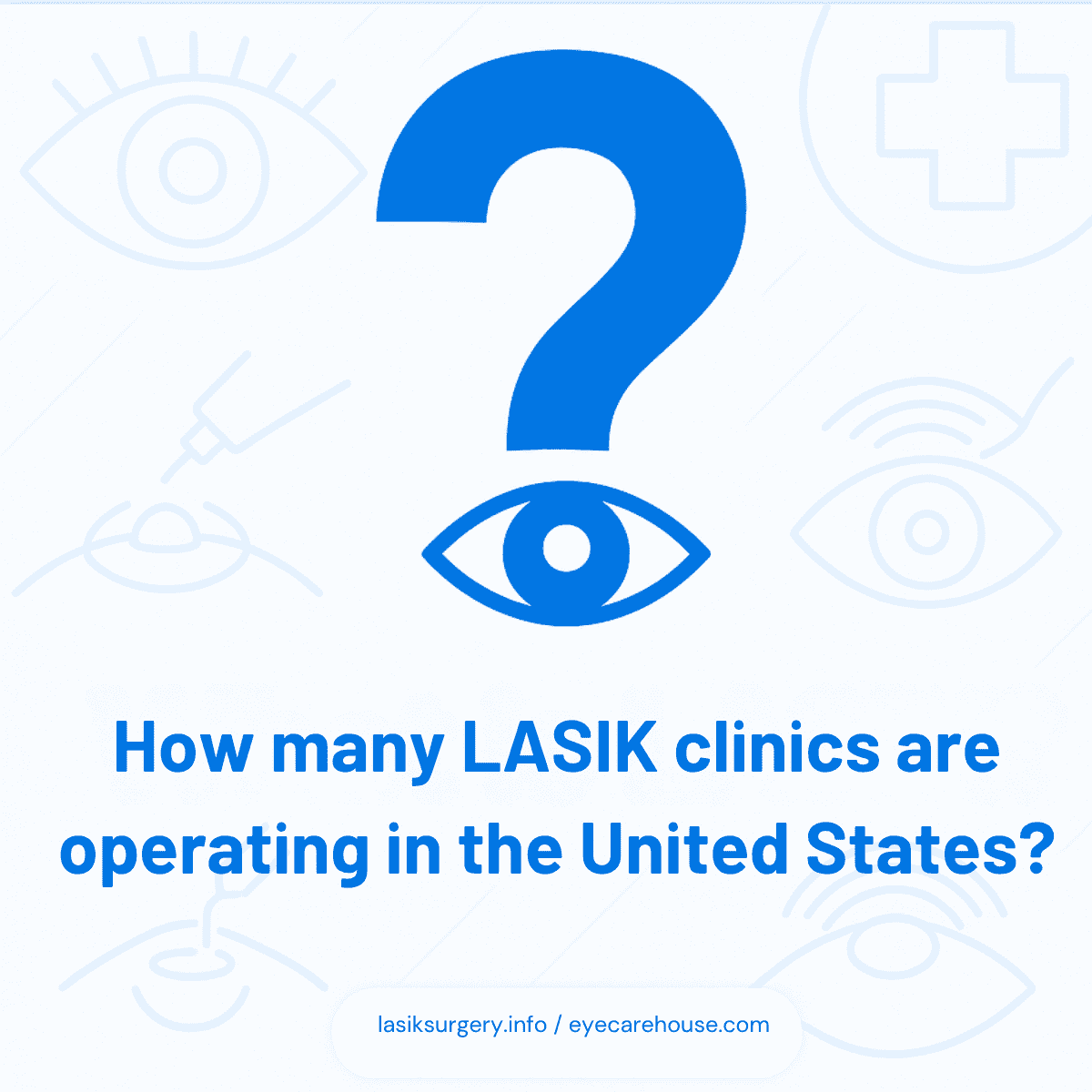
LASIK volumes peaked in the early 2000s but have stabilized at over 700,000 annual procedures in recent years.
